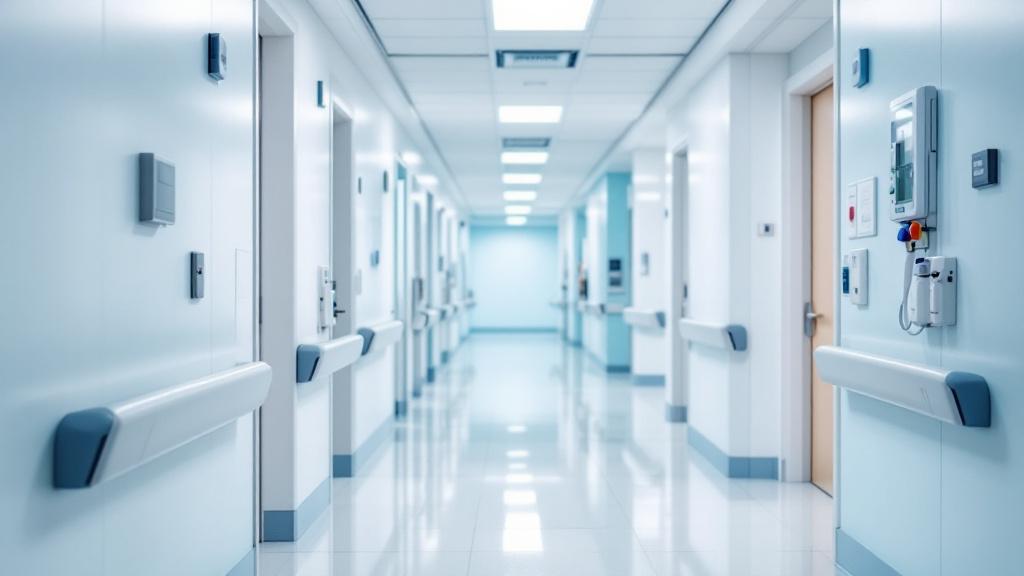What Bills Count For Food Stamps?
Discover the essentials of food stamp allowable expenses. Maximize your SNAP benefits and make informed choices.
.jpg)
Understanding Food Stamp Allowable Expenses
In order to make the most of SNAP benefits, it's important to have a clear understanding of food stamp allowable expenses. This section will provide an introduction to SNAP benefits and eligibility, as well as an overview of what expenses are covered by food stamps.
Introduction to SNAP Benefits and Eligibility
SNAP, which stands for Supplemental Nutrition Assistance Program, is a federal assistance program designed to help low-income individuals and families meet their basic nutritional needs. Administered by the United States Department of Agriculture (USDA), SNAP provides eligible participants with benefits to purchase food items.
To qualify for SNAP benefits, individuals and households must meet certain income and resource eligibility requirements. The specific guidelines vary by state, but generally, eligibility is based on factors such as income, household size, and expenses. It's important to note that SNAP benefits are intended to supplement a household's food budget, not cover all food expenses.
For a comprehensive list of bills and expenses that count towards SNAP eligibility, you can refer to their article on SNAP eligible household expenses.
What are Food Stamp Allowable Expenses?
Food stamp allowable expenses refer to the items and goods that can be purchased using SNAP benefits. While the primary purpose of SNAP benefits is to help individuals and families obtain nutritious food, there are specific guidelines regarding which items can be purchased.
Qualifying Food Purchases
SNAP benefits can be used to purchase a wide range of food items for household consumption. This includes:
- Fruits and vegetables
- Meat, poultry, and fish
- Dairy products
- Bread and cereals
- Snack foods
- Seeds and plants for growing food at home
However, it's important to note that there are restrictions on some food items. For example, hot prepared foods, alcoholic beverages, and non-food items cannot be purchased with SNAP benefits.
For a more detailed list of food items that qualify for SNAP benefits, please refer to their article on food stamp qualifying expenses.
Non-Food Items Eligible for Purchase
In addition to food items, SNAP benefits can also be used to purchase certain non-food items that are essential for the household. These items include:
- Baby formula and baby food
- Diapers
- Cleaning and hygiene products
It's worth noting that the eligibility of non-food items may vary by state, so it's important to check the specific guidelines in your area.
Understanding food stamp allowable expenses is essential for SNAP beneficiaries. By knowing what items are eligible for purchase, individuals and families can make informed decisions about how to allocate their SNAP benefits and ensure that they are used effectively to meet their nutritional needs.
Essential Expenses Covered by Food Stamps
For individuals and families who rely on the Supplemental Nutrition Assistance Program (SNAP), understanding the essential expenses covered by food stamps is crucial. SNAP benefits are designed to help eligible individuals and households meet their nutritional needs. In this section, we will explore qualifying food purchases and non-food items that are eligible for purchase using food stamps.
Qualifying Food Purchases
SNAP benefits can be used to purchase a wide variety of food items. Qualifying food purchases include:
It's important to note that hot prepared foods, such as meals from restaurants or delis, are generally not eligible for purchase using SNAP benefits. However, certain states may have exceptions for homeless individuals, elderly individuals, or individuals with disabilities. For more details on specific food items covered by SNAP, refer to their article on snap approved bills.
Non-Food Items Eligible for Purchase
In addition to food, SNAP benefits can also be used to purchase certain non-food items that are essential for the household. These items include:
These non-food items can support food production and help individuals and families cultivate their own fresh produce at home. It's important to remember that SNAP benefits are primarily intended to assist with purchasing food, and the eligibility of non-food items may vary by state.
Understanding the essential expenses covered by food stamps empowers SNAP beneficiaries to make informed choices when utilizing their benefits. By focusing on qualifying food purchases and utilizing food stamps wisely, individuals and families can stretch their resources and ensure access to nutritious meals.
Expenses Not Covered by Food Stamps
While the Supplemental Nutrition Assistance Program (SNAP) provides assistance for purchasing essential food items, there are certain expenses that are not covered by food stamps. It's important to understand what items are considered non-qualifying food items and non-food items that are not eligible for purchase using SNAP benefits.
Non-Qualifying Food Items
SNAP benefits are intended to be used for purchasing food items that provide nourishment and sustenance. However, there are certain food items that do not qualify for purchase using food stamps. These include:
- Prepared foods: SNAP benefits cannot be used to purchase ready-to-eat meals, hot foods, or food items that are meant to be consumed on the premises where they are purchased. This includes items from deli counters, restaurants, and fast-food establishments.
- Alcoholic beverages: The purchase of alcoholic beverages is not allowable using SNAP benefits. This includes beer, wine, and spirits.
- Tobacco products: SNAP benefits cannot be used to purchase cigarettes, cigars, chewing tobacco, or any other tobacco products.
- Vitamins and supplements: While essential for health, vitamins and dietary supplements are not considered eligible food items under SNAP guidelines.
To ensure compliance with SNAP guidelines, it's important to be aware of these non-qualifying food items when using your benefits.
Non-Food Items Not Eligible for Purchase
In addition to non-qualifying food items, SNAP benefits cannot be used to purchase certain non-food items. These items are not considered essential for sustenance and are therefore not eligible for purchase using SNAP benefits. Non-food items that cannot be purchased with SNAP benefits include:
- Household supplies: SNAP benefits cannot be used to purchase cleaning products, paper goods, personal hygiene items, pet food, or other household supplies.
- Non-essential personal care items: Items such as cosmetics, skincare products, and grooming supplies are not eligible for purchase using SNAP benefits.
- Kitchen utensils and equipment: While essential for food preparation, kitchen utensils, appliances, and cookware are not eligible for purchase with SNAP benefits.
It's important to understand these limitations to ensure that SNAP benefits are used appropriately.
By being aware of the non-qualifying food items and non-food items that are not eligible for purchase using SNAP benefits, you can make informed decisions when utilizing your benefits. Remember to report any changes in income or expenses to your SNAP caseworker to ensure ongoing compliance with program guidelines. Failure to comply with SNAP guidelines may result in consequences, including loss of benefits.
Navigating Food Stamp Allowable Expenses
As a recipient of Supplemental Nutrition Assistance Program (SNAP) benefits, it's important to navigate the allowable expenses to maximize the value of your benefits. Here are some tips to help you make the most of your SNAP benefits and resources for additional assistance:
Tips for Maximizing SNAP Benefits
- Plan your meals and make a shopping list: Before heading to the grocery store, plan your meals for the week and create a shopping list based on your meal plan. This can help you avoid impulse purchases and ensure that you buy only what you need.
- Shop smart: Look for sales, discounts, and coupons to stretch your SNAP benefits further. Compare prices and consider buying store brands, which are often more affordable. Be mindful of unit prices to get the best value for your money.
- Buy in bulk: Consider purchasing non-perishable items in bulk when they are on sale. This can help you save money in the long run and ensure that you have a stock of essential items.
- Utilize farmers markets and community-supported agriculture: Many farmers markets and community-supported agriculture programs accept SNAP benefits. These options often provide fresh, locally sourced produce at affordable prices.
- Learn to cook and meal prep: Cooking meals at home can be more cost-effective than eating out. Explore budget-friendly recipes and learn to meal prep, which can save you time and money throughout the week.
- Grow your own food: If possible, consider starting a small garden to grow your own fruits, vegetables, and herbs. Not only can this be a rewarding experience, but it can also help supplement your food supply.
Resources for Additional Assistance
- SNAP Education Programs: Take advantage of SNAP Education programs offered in your area. These programs provide valuable information on nutrition, budgeting, and meal planning to help you make informed choices.
- Local food banks and pantries: Food banks and pantries can provide additional support during times of need. They offer free or low-cost food options, supplementing your SNAP benefits when necessary.
- Social service agencies: Local social service agencies can provide information and assistance with SNAP benefits, including help with applications, recertification, and answering any questions you may have.
- Online resources: Visit reputable websites that provide information on SNAP benefits. These resources can help you understand what bills count for food stamps and provide guidance on eligible household expenses.
Remember, it's important to stay informed and up-to-date with the guidelines and regulations of SNAP benefits. Reporting any changes in income or expenses promptly ensures that you receive the appropriate level of support. Misusing SNAP benefits can have serious consequences, including loss of benefits and legal action. By utilizing these tips and resources, you can navigate food stamp allowable expenses with confidence and make the most of your SNAP benefits.
Ensuring Compliance with SNAP Guidelines
To maintain eligibility for SNAP benefits and ensure compliance with program guidelines, it is important for recipients to understand their responsibilities. This includes reporting any changes in income or expenses promptly and using their benefits only for allowable expenses. Failure to comply with SNAP guidelines can have serious consequences. Let's explore reporting changes in income or expenses and the potential consequences of misusing SNAP benefits.
Reporting Changes in Income or Expenses
As a SNAP beneficiary, it is crucial to report any changes in income or expenses to your local SNAP office in a timely manner. This includes changes in employment status, income amount, household composition, or any other factors that may impact your eligibility or benefit amount. By promptly reporting these changes, you ensure that your benefits are accurately calculated and reflect your current circumstances.
Failure to report changes can result in an incorrect benefit amount, potentially leading to overpayments or underpayments. It is important to be proactive and provide accurate information to the SNAP office to avoid any potential issues.
Consequences of Misusing SNAP Benefits
Misusing SNAP benefits, intentionally or unintentionally, can have severe consequences. It is essential to understand the rules and limitations of the program to avoid any misuse. Some common examples of misusing SNAP benefits include:
- Ineligible Purchases: Using SNAP benefits to purchase non-qualifying food items or non-food items not eligible for purchase is considered misuse. It is important to familiarize yourself with the food stamp qualifying expenses to ensure that you spend your benefits appropriately.
- Selling or Trading Benefits: Exchanging or selling SNAP benefits for cash, unauthorized items, or services is strictly prohibited. This includes situations where someone else uses your benefits card or PIN without your knowledge or permission.
- Providing False Information: Providing false information or withholding relevant information during the application or recertification process is considered fraud. It is vital to be honest and provide accurate information to the best of your knowledge.
Consequences for misuse of SNAP benefits can include fines, disqualification from the program, and potential legal action. It is crucial to use your benefits responsibly and within the guidelines set forth by the program.
By understanding and adhering to SNAP guidelines, recipients can ensure they remain in compliance with the program and receive the benefits they are entitled to. Reporting any changes in income or expenses promptly and using benefits only for allowable expenses are essential steps in maintaining program eligibility while avoiding potential consequences.
FAQs
Can I include my phone or internet bill as a deduction for food stamps?
Unfortunately, you cannot include your phone or internet bill as a deduction for food stamps. Only certain bills that are necessary for basic living expenses can count towards your deductions.
If I receive child support payments, will it affect my eligibility for food stamps?
Child support payments you receive will not affect your eligibility for food stamps. However, if you are legally required to pay child support, those payments can count as a deduction.
What happens if my income changes while I am receiving food stamps?
If your income changes while you are receiving food stamps, it is important to report the change to your local SNAP office. Your benefits may be adjusted based on the new information.
Can college students apply for food stamps?
Yes, college students may be eligible for food stamps if they meet certain criteria such as working at least 20 hours per week or participating in a work-study program. It's important to check with your local SNAP office to see if you qualify.
How long does it take to get approved for food stamps?
The time it takes to get approved for food stamps varies by state and individual circumstances. In general, it can take up to 30 days from the date of application to receive benefits.
Conclusion
In conclusion, if you're wondering what bills count for food stamps, the answer is simple: bills that are necessary for basic living expenses. This includes shelter costs, medical expenses, childcare expenses, child support payments, and elderly or disabled care expenses. If you think you may be eligible for food stamps, be sure to apply. The program can provide much-needed assistance to help you put food on the table.
Sources
https://www.h2hhc.com/what-bills-count-for-food-stamps
https://freedomcare.com/what-bills-count-for-food-stamps
https://www.martoncare.com/bills-for-food-stamps
https://www.eminencehhcma.com/what-bills-count-for-food-stamps

How to Plan for Long-Term Home Care Services

How Home Team Helps Families Make Informed Care Decisions

How Home Team's Caregivers Provide Peace of Mind for Families



